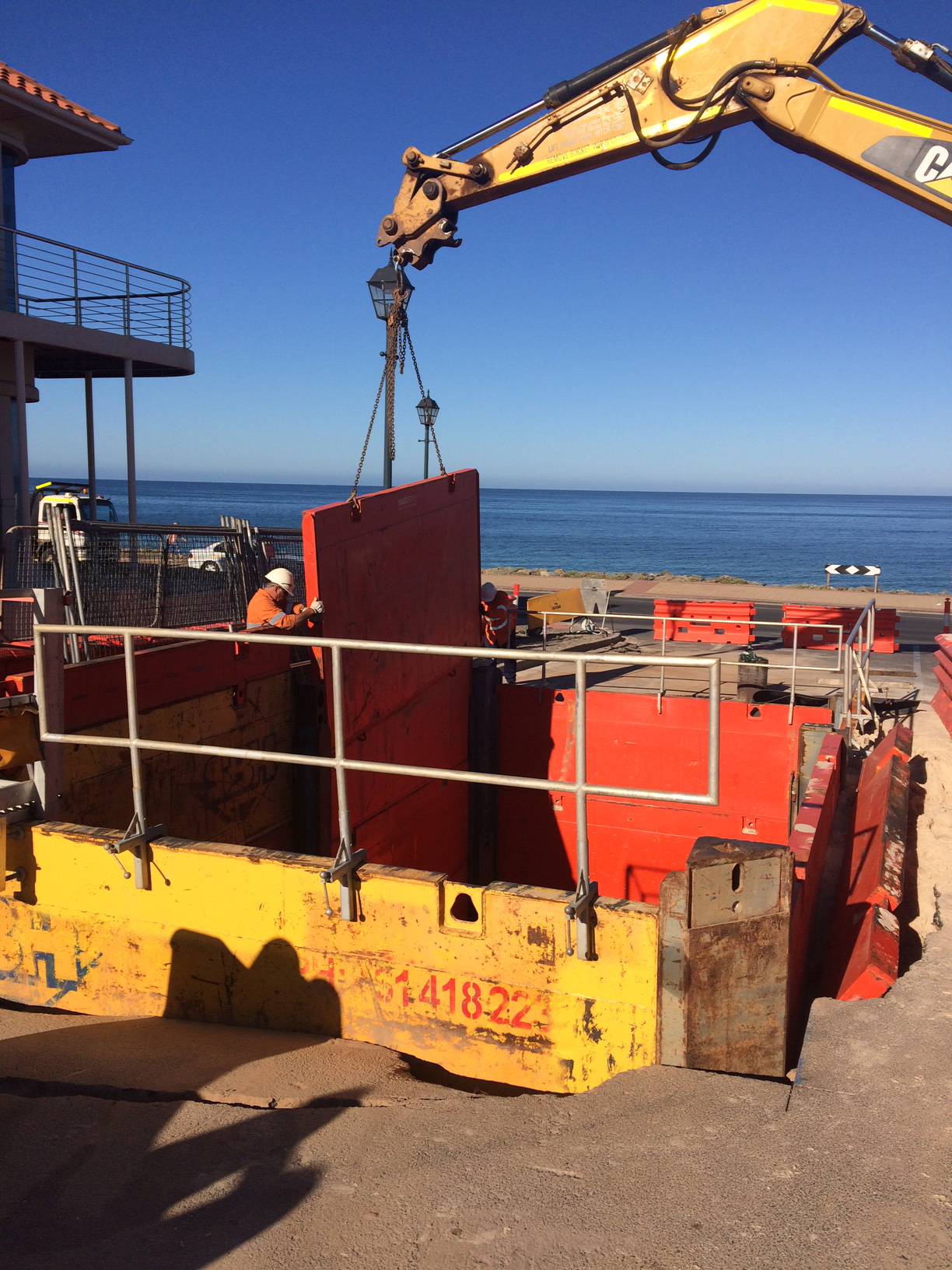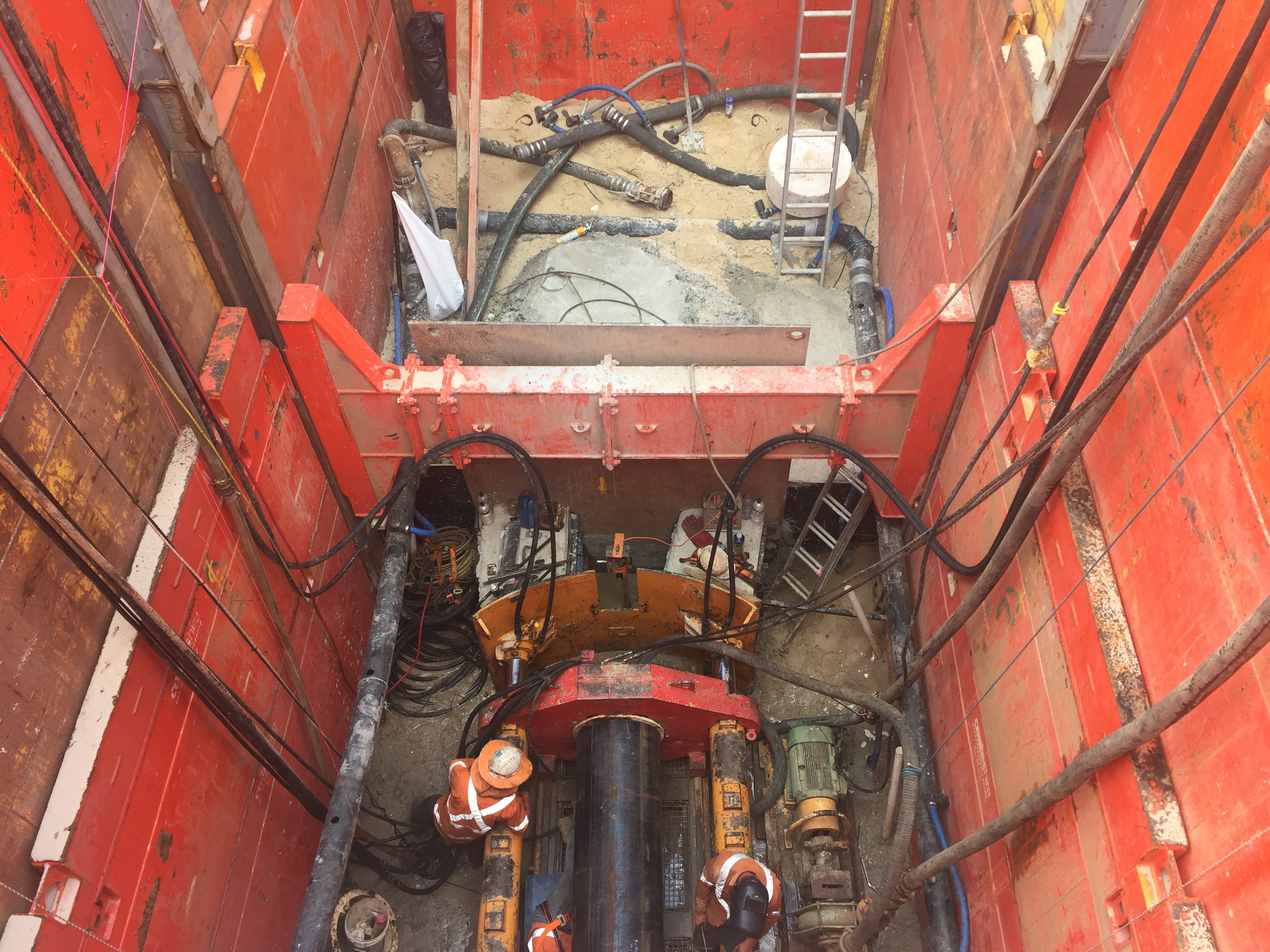Project: Bickford Terrace, Major Drainage Project
Budget: $2 million
Who: City of Holdfast Bay and Lucas Total Contract Solutions
Using innovative trenchless technology for a major drainage project in South Australia radically reduced the project’s footprint, greenhouse gas emissions and impact on the community.

In October 2016, residents in the City of Holdfast Bay found stormwater lapping at their doors.
The area’s drainage network was under pressure from increasing residential density; as a result, a significant amount of stormwater had pooled within Tarlton Street and Bickford Terrace during a 1 in 50 year rain event.
Modelling showed a major outfall was required to collect flows in Tarlton Street, which would substantially reduce the extent of flooding in the area and prevent overflow of floodwaters further north. Construction of this outfall would future proof about 80 properties in the area, some of which would be inundated to depths of up to 800mm in a 1:100 ARI event.
Thinking outside the box
Commencing in September 2017, the project called for the construction of an 83m-long culvert detention and storage unit, designed to retain water during heavy rain. The stormwater would then travel through a 220m-long, 400mm diameter pipe to the beach outfall – but installing the pipe on a residential street was going to be a challenge.
A standard open excavation along the street would restrict access to more than 30 properties, and close the road for an extended period.
Project Director Rick Walsh from Lucas Total Contract Solutions explains that instead of using open excavation as specified in the original RFT, the team instead opted to use microtunnelling technology.

“Due to the ground conditions – collapsible sand and groundwater – and the fact it was on a suburban street, the traditional excavation to lay a stormwater system was ruled out,” Walsh says.
The excavation also needed to be deep – really deep.
“The biggest challenge was that from the western end of Bickford Terrace, towards the coastline, there was an elevation in the natural land, so you would have to excavate about 13m deep,” Walsh says.
The tricky conditions, the need for accuracy and an imperative to reduce the project’s impact on the residents meant that the team needed the right equipment for the job.
They brought in one of only two guided boring system machines in Australia capable of performing the job at the depths required. Two pits were dug – one for the pipejacking launch, and one for the receival.
“We microtunnelled to install a steel pipe which was 600mm in diameter, and that created an area we could push in the reinforced concrete pipe that created the actual stormwater system,” Walsh explains.
“Our footprint was minimal compared to what a trench down the entirety of the road would be; we only took up an 8m x 4m footprint in two areas of the road. It allowed us to dictate where to put those pits, so then we could allow residents to freely come in and out of their driveways.
“The AVN slurry machine we used pushes bentonite around the steel casing pipe to reduce the friction so you can actually go further with the pipejacking.”
A laser guided system integrated into the drill head allowed the operator to constantly monitor the progress on a screen integrated into the control console and make corrective steering adjustments to the drill head.
The trenchless technology also meant the team avoided encountering numerous buried utilities and services by tunneling underneath.
Walsh says the project team also put a lot of thought into logistics management, in the interest of minimising their impact on the community.
“We had a laydown yard that was offsite, and we would program the materials to come onsite as needed – the site team had daily meetings about the logistics and making sure our footprint was minimal,” he says.

The biggest benefit from an environmental perspective was the clear reduction in CO2 emissions, achieved due to the shorter job duration and less construction equipment required.
A C02 calculator showed that by utilising this technology, the team cut emissions on the project by 84.34%.
The outcomes
The project was completed in March 2018, and the team's innovative approach was recognised at the IPWEA SA Excellence Awards, winning the Excellence in Design and/or Construction of a Public Works Project – Water, Over $1 million category.
Walsh anticipates the method will likely be replicated in the City’s future sewage and stormwater upgrades and installations.
“Where the traditional open cut excavation would usually take place, this would be a good alternative, and it would be much more feasible,” he says.